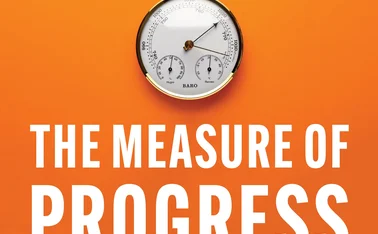
Podcast: Arthur Turrell on agent-based modelling
The Bank of England economist says ABMs should complement, not replace, other models

Central banks are still focused on their core structural models, but increasingly they are beginning to experiment with a very different style of modelling: the agent-based model.
Arthur Turrell, a research economist at the Bank of England, started working with ABMs as a plasma physicist at Imperial College London, but later moved to the central bank. His work now involves using agent-based models to understand the macroeconomy.
In contrast to a dynamic stochastic general equilibrium (DSGE) model, which treats the economy as a set of equations to be solved, an agent-based model treats the economy as a complex system, full of moving, interacting parts.
A set of agents operates according to rules of thumb for decision-making, and the model contains further rules governing agents’ interactions with each other and their environment. Behaviour emerges from the complex interactions of many different agents.
“Because these models can surprise you, you might discover transmission effects that you didn’t know about previously,” says Turrell, who sat down with Central Banking for the latest episode of the Rewiring Macro podcast series.
Turrell views ABMs as a complement to other approaches, noting a simpler, theoretical model might be better for some questions, and certainly easier to explain, while statistical models can be better at forecasting.
Because economists still have relatively limited knowledge of human behaviour, it can be difficult to generate precise predictions from ABMs, Turrell says. He views them as useful for exploring new ideas, which could perhaps in future be built into a more rigid, theoretical model, once economists understand the dynamics.
“The reality is, these models are complementary, and are trying to understand all the same mechanisms,” says Turrell. He would like to see modelling approaches come closer together: “I think we’ll actually find a lot out from that process.”
So far, agent-based models have tended to be applied to relatively narrow questions – for instance, a recent BoE working paper used an ABM to study how flash crashes develop.
But many agent-based modellers are working to scale that work up, and there have been attempts to model the entire economy. There is more work to do, but “I think that’s entirely possible”, says Turrell.
“This for me is one of the most exciting areas of agent-based modelling; to try and recreate what’s going on in the macroeconomy,” he says.
Index
00.35 – From plasma physicist to BoE economist
04.55 – Is economics behind on its agent-based modelling?
08.20 – Behavioural complexities
14.30 – What are ABMs good for?
20.30 – ABMs as exploratory tools
25.30 – Will we see wider adoption in future?
To hear the full interview, listen in the player above, or download. CB On Air is also available via iTunes or podcast apps.
Only users who have a paid subscription or are part of a corporate subscription are able to print or copy content.
To access these options, along with all other subscription benefits, please contact info@centralbanking.com or view our subscription options here: subscriptions.centralbanking.com/subscribe
You are currently unable to print this content. Please contact info@centralbanking.com to find out more.
You are currently unable to copy this content. Please contact info@centralbanking.com to find out more.
Copyright Infopro Digital Limited. All rights reserved.
As outlined in our terms and conditions, https://www.infopro-digital.com/terms-and-conditions/subscriptions/ (point 2.4), printing is limited to a single copy.
If you would like to purchase additional rights please email info@centralbanking.com test test test
Copyright Infopro Digital Limited. All rights reserved.
You may share this content using our article tools. As outlined in our terms and conditions, https://www.infopro-digital.com/terms-and-conditions/subscriptions/ (clause 2.4), an Authorised User may only make one copy of the materials for their own personal use. You must also comply with the restrictions in clause 2.5.
If you would like to purchase additional rights please email info@centralbanking.com test test test








